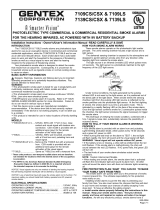
TABLE OF CONTENTS
2
WeR@Home+™ Smoke Alarm User Guide
© 2021 Essence Security International (E.S.I.) Ltd.- All Rights Reserved - Proprietary and Confidential
Table of Contents
1. 1. Overview ......................................................................................................................................... 3
2. 2. Installation Preparation .................................................................................................................. 4
2.1. Required Equipment ............................................................................................................ 4
2.2. Location Recommendations ................................................................................................ 4
2.2.1 Acceptable Structures for SK Usage ....................................................................... 4
2.2.2 Acceptable Installation Locations ........................................................................... 5
2.2.3 Unacceptable Installation Locations ...................................................................... 8
3. 3. Installation .................................................................................................................................... 10
3.1. Testing the SK ..................................................................................................................... 14
4. 4. Operation ......................................................................................................................................15
4.1. Physical Attributes ...............................................................................................................15
4.2. Features .............................................................................................................................. 16
4.3. Indications ...........................................................................................................................17
4.4. Stopping the Alarm ............................................................................................................. 18
4.5. Silencing the Alarm ............................................................................................................. 18
5. 5. Maintenance ................................................................................................................................. 19
5.1. Replacing the Batteries ....................................................................................................... 19
5.2. Cleaning the SK .................................................................................................................. 20
5.3. Testing the SK ..................................................................................................................... 21
6. 6. Fire Prevention and Safety ............................................................................................................ 23
6.1. Prevention and Planning ..................................................................................................... 23
6.2. How to Escape if a Fire Occurs ............................................................................................ 24
6.3. Limitations of SKs ................................................................................................................ 24
7. 7. Specifications ................................................................................................................................ 26
8. Appendix A Certification Notes ....................................................................................................... 28





















